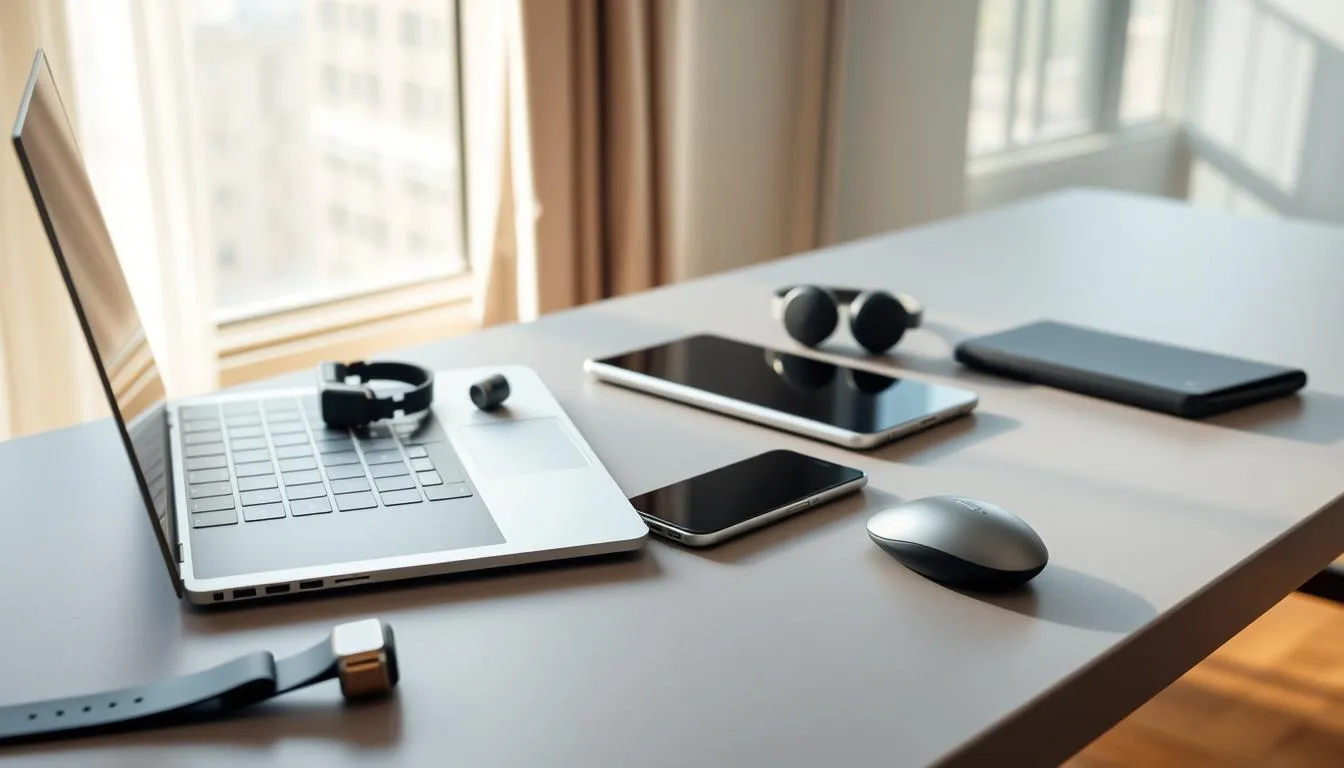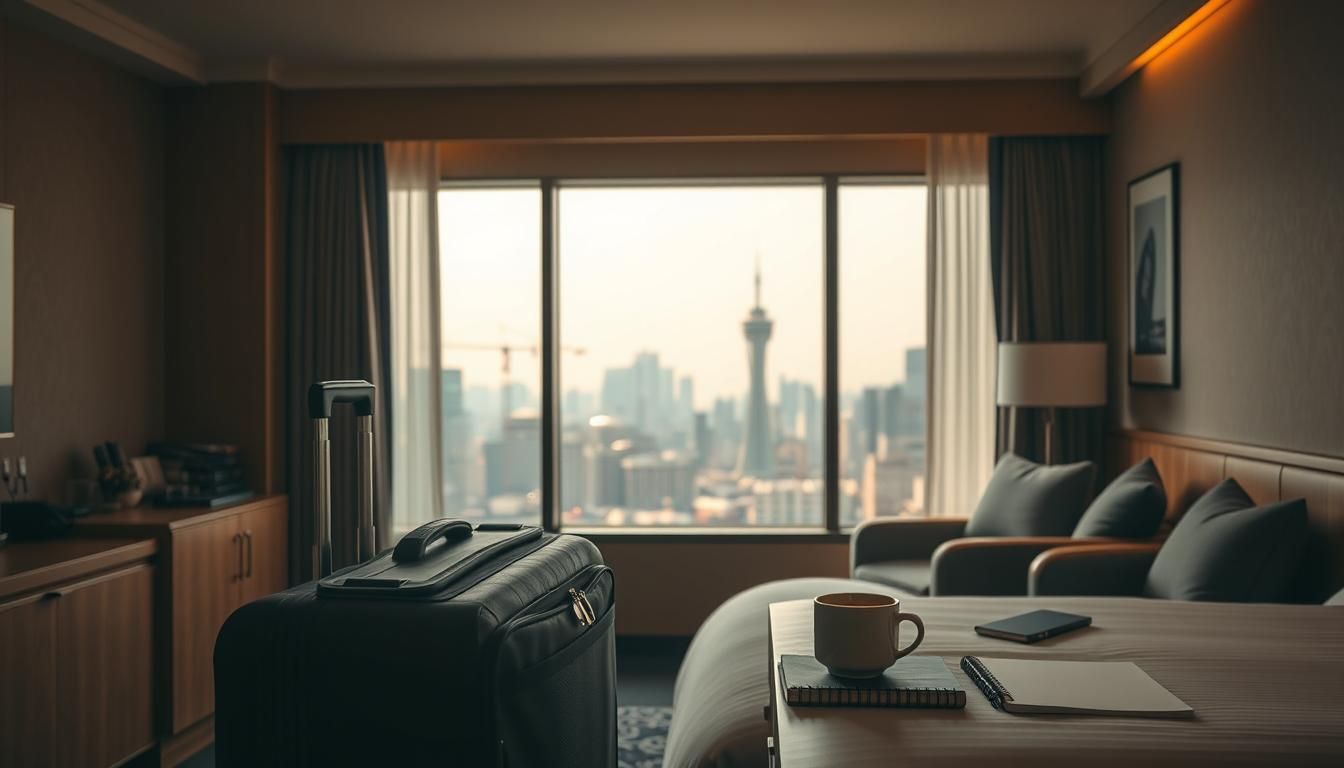Did you know more than 60% of professionals report extending a work stay to enjoy local time? That shift shows how business and leisure now overlap in ways that matter to teams and companies.
This guide sets the stage for practical best practices that help modern travelers merge work with personal rest. You’ll learn what bleisure means, why it matters for business, and how one business trip can become a balanced, rewarding experience.
We’ll preview easy frameworks for planning a compliant trip that meets company rules, personal goals, and real work demands. Expect clear steps on approvals, budgets, tech needs, and safety so downtime is genuine and deliverables stay on track.
Think of this as a step-by-step map: align expectations, schedule focused work blocks, capture value before and after the trip, and avoid expense and security pitfalls. Practical tips and links to essential resources, like the essential items for bleisure travelers, will help you plan smarter.
Key Takeaways
- Blend work and leisure with clear rules and a simple timeline.
- Secure approvals, set budgets, and use the right tech for connectivity.
- Focus on boundaries: scheduled work blocks and intentional rest.
- Watch for expense, security, and duty-of-care pitfalls.
- Thoughtful planning boosts morale and business outcomes.
The rise of bleisure travel and why it matters now
More employees are turning short work trips into opportunities for rest, learning, and local discovery. This shift is not a fad: Navan reported a 76% year-over-year growth in 2023, and industry groups show roughly two-thirds of business travelers now plan to combine work with leisure.

Current trendlines: explosive growth and shifting behavior
Growth is strong: economy where services meet both corporate and consumer needs.experiential economy where services meet both corporate and consumer needs.
Generational drivers and family joining trips
Younger employees—especially Millennials and Gen Z—treat work trips as career opportunity and exploration. Surveys show many plan to bring a friend or family member and extend a trip by a few days.
Common blended trip formats
- Extend days before or after meetings to add a short vacation.
- Invite companions to join during non-work days.
- Set up a regional home base and take nearby day trips while working remotely.
Why it matters: People report better productivity and health when they balance meetings with downtime. That makes this trend an important opportunity for companies to adapt policies and support employees so trips deliver both results and renewal.
Planning your bleisure framework before you book
Map out your schedule first: know when meetings end, and when your personal time starts. A clear timeline keeps a business trip productive and lets you enjoy real downtime.

Mapping the timeline: when work days end and leisure days begin
Start with a day-by-day calendar that marks meeting blocks, deadlines, and travel windows. Note exactly how many days you will add before or after meetings.
Tip: Many employees prefer post-meeting days so work wraps cleanly and vacation feels uninterrupted.
Choosing destinations, hotels, and rates that support both business and leisure
Pick a destination and neighborhood that balance client access with walkability. Choose hotels with quiet rooms, strong Wi‑Fi, and a workspace.
Price both corporate and personal rates. Decide where the company covers costs and where your vacation booking begins. Share this plan with stakeholders so expectations are clear.
| Need | What to look for | Why it matters | Example |
|---|---|---|---|
| Workroom | Quiet desk, reliable Wi‑Fi | Keeps deliverables on time | Hotel business center or in-room desk |
| Location | Walkable, safe, transit access | Makes short leisure activities easy | City neighborhood near dining |
| Rates | Corporate vs. personal pricing | Prevents expense disputes | Company rate for weekdays, personal for extra days |
| Stays | Fitness, quiet floors, local sights | Supports well‑being and family plans | Hotel with gym and cultural walking routes |
Build leisure around work anchors, plan short micro‑itineraries from a temporary home base, and keep personal needs front and center so the trip meets both business and relaxation goals.
Bleisure travel: employer policies, approvals, and duty of care
A strong policy turns a combined work-and-rest trip from guesswork into a repeatable process. Clear rules help employees and managers know exactly when company time ends and personal time begins.
Draw clear boundaries
Define the start and end of professional hours, locations where work is expected, and whether remote work continues during personal days.
Make it simple: state when business coverage stops and personal travel begins so both parties understand liability and pay rules.
Eligibility and approvals
Set eligibility criteria and require approvals from leadership, HR, finance, and legal when needed. Log requests in HRIS or the booking system so decisions stay transparent.
Expense rules and cancellations
Spell out what the company covers: weekdays, client events, and core transport. Specify which costs switch to personal once leisure time starts.
Include a cancellation clause for the personal segment so an employee accepts responsibility if business plans change.
Insurance, risk, and communications
Confirm insurance covers the business trip and clarify coverage for personal days. Run pre‑travel risk assessments for health, weather, and geopolitical concerns.
Decide duty of care scope — whether tracking, incident response, or check‑ins extend into off‑clock time — and share conduct and social media expectations to protect the company brand.
- Set boundary lines for time business vs. leisure.
- Keep approvals simple and logged.
- Document expenses clearly to avoid disputes.
- Confirm insurance and do a risk assessment.
Tip: Centralize your rules and link employees to clear, accessible travel policies like the example on bleisure travel policies.
Technology essentials to manage blended work trips
Smart tech keeps blended work trips smooth, secure, and simple for employees on the move.
 Automated expense reporting captures and categorizes charges in real time. Mobile apps scan receipts, match transactions, and split business from personal costs so approvals are faster.
Automated expense reporting captures and categorizes charges in real time. Mobile apps scan receipts, match transactions, and split business from personal costs so approvals are faster.
Automated expense reporting, mobile apps, and real-time tracking
Integrate booking with expenses to get live visibility. Analytics then show spending patterns so the company can refine policy and negotiate better supplier rates.
Securing company data on the road
Protect endpoints with VPN, MFA, and MDM. These tools block risky Wi‑Fi, allow remote wipe for lost devices, and make secure sharing the default for files and client deliverables.
Employee location tools, consent, and emergency readiness
Use check-ins and location tools with clear consent. That keeps employees safe and preserves trust while meeting legal needs.
| Need | Tool | Benefit | Example |
|---|---|---|---|
| Expense clarity | Mobile expense app | Separates business/personal instantly | Receipt scan + auto-categorize |
| Data security | VPN, MFA, MDM | Protects company files on public Wi‑Fi | Remote wipe and two-factor login |
| Visibility | Booking + expense integration | Detects policy issues fast | Real-time dashboards |
| Safety | Location check-ins | Speeds emergency response with consent | Timed check-ins and alerts |
Right-size the stack: pick tools that match employee needs so tech removes friction and lets people focus on work and downtime.
Budgeting, compliance, and fair treatment across teams
Clear budgets and consistent rules turn combined business and personal stays into predictable, fair experiences for employees and finance teams.
What’s reimbursable and what isn’t on business leisure trips
Define reimbursable versus personal costs in plain terms. List weekdays, client events, and core transport as company-covered items. Mark added nights, sightseeing, and upgrades as personal expenses.
Tip: Require split receipts or separate bookings so expenses stay clear when a reservation covers both business and leisure days.
Using analytics to refine policies and negotiate better rates
Real-time expense visibility flags budget overruns and recurring policy breaches early. That helps finance act quickly and reduces manual reviews.
Use analytics to spot spending patterns and then negotiate improved airline and hotel rates based on actual employee behavior and stays. This lowers costs and improves satisfaction across teams.
- Document rules for mixed reservations so employees avoid confusion.
- Train approvers to apply consistent decisions and speed reimbursements.
- Keep a feedback loop so employees and employers refine needs fairly.
Make the most of your trip: productivity and well-being tips for travelers
Small routines and smart timing let you combine high-focus work with meaningful downtime. Use structure so meetings stay crisp and personal time feels restful.
Balancing meetings, exploring new places, and maintaining health
Block your calendar to protect focused work and key meetings. Then reserve short windows for exploring new activities at the destination during low-energy periods to recharge.
Choose hotels with gyms, quiet rooms, and healthy dining nearby. That reduces friction so you can keep sleep and nutrition on track without extra planning.
- Plan short activities between sessions—walks, a nearby museum, or a park—to boost productivity and satisfaction.
- If bringing family, set clear rendezvous points and time windows for meals and outings so work stays predictable and leisure feels intentional.
- Use mornings for deep work and late afternoons for light sightseeing. Keep logistics simple to return on time for the next business day.
Keep a minimalist routine: hydration, brief movement, and steady sleep targets that travel well. Capture one small win each day—one local spot visited or one major call wrapped—to keep momentum and vacation spirit alive.
“Short, intentional breaks often lead to higher focus and better health on business trips.”
Be ready to adapt: if meetings shift, swap a long excursion for a nearby activity so you protect rest while still enjoying the trip vibe.
Conclusion
Good structure—simple rules, solid tech, and clear approvals—makes blended work stays predictable and satisfying.
When employers set clear policies and employees follow a simple timeline, a combined business and personal trip becomes a real benefit. Automation for expenses, secure tools, and consent-based check-ins reduce friction and boost satisfaction across teams.
This trend aligns with how people and companies operate today. For employers, it is an opportunity to support wellbeing while protecting company interests across global business needs.
With discipline and flexibility, every trip can deliver strong performance, meaningful leisure, and a refreshed return to the office.
FAQ
What is a blended business and leisure trip and why is it popular now?
A blended business and leisure trip combines work duties with personal time at the same destination. It’s growing because remote work and flexible schedules let employees extend stays, bring family, or explore new places after meetings. Employers benefit from higher employee satisfaction and retention when policies support these mixed trips.
How far in advance should I map work days and leisure days before I book?
Plan the timeline at booking: reserve core business days first, then add personal days immediately after. That prevents rate shocks and ensures lodging and meeting spaces match both needs. Clear dates also simplify approvals and expense tracking for your company.
Which hotels and rates work best for combined work and personal stays?
Choose properties with reliable Wi‑Fi, business centers, and quiet rooms near leisure attractions. Look for flexible rates that allow date changes without penalties. Corporate programs from Marriott, Hilton, and IHG often offer perks that support both productivity and relaxation.
What should companies include in policies about mixed work trips?
Policies should define professional vs. personal time, outline approval workflows, state eligibility, and list reimbursable expenses. Include duty of care details like emergency contact procedures and insurance coverage. Clear rules reduce disputes and fraud risk.
How do approval workflows typically handle personal extensions or companions?
Standard workflows require a manager sign‑off for any personal extension beyond business days and for guest accommodations when billed to the company. HR or travel teams often verify that work responsibilities won’t be affected and confirm expense boundaries before travel.
Which expenses are usually reimbursable on a mixed trip?
Employers commonly cover core business costs: flights for workdays, meeting room fees, and business meals. Personal extensions, leisure activities, and companion costs are typically out of pocket. Always follow your company’s specific expense rules and get approvals in writing.
What insurance and risk steps should employees take for blended trips?
Confirm that company travel insurance covers extended stays and personal activities. Carry a copy of emergency contacts, register with any employer tracking tool if required, and check local health and entry requirements. Risk assessments help employers meet duty of care obligations.
How can technology make managing a mixed trip easier?
Use mobile apps for booking, automated expense reporting, and itinerary management. Real‑time tracking and secure tools like VPN, MFA, and mobile device management keep data safe. These tools streamline approvals and provide visibility for employers and travelers.
Is tracking an employee’s location during a trip legal and ethical?
Location tools can support emergency response and duty of care, but companies must obtain consent, limit data collection, and be transparent about use. Policies should state retention periods and give employees opt‑in choices where possible.
How do companies prevent expense fraud on combined trips?
Clear expense categories, receipt requirements, and automated audits reduce fraud. Requiring pre‑approvals for personal extensions and separating business and personal card usage also helps. Regular policy training reinforces expectations.
How should leaders ensure fair treatment across teams when allowing personal extensions?
Apply consistent eligibility rules, keep approval criteria transparent, and use analytics to monitor usage across departments. That prevents favoritism and helps negotiate corporate rates based on accurate demand data.
Can employees work remotely from a different country during a business trip?
Cross‑border remote work raises tax, visa, and payroll issues. Employees must consult HR or legal before working from another country. Employers should have guidelines addressing compliance, benefits, and data protection for international remote work.
What productivity tips help balance meetings and leisure time on a trip?
Block focused work hours, use local meeting hubs or hotel business centers, and schedule leisure activities around low‑energy times. Prioritize sleep, hydrate, and build short breaks into your day to stay productive and enjoy the destination.
How can companies measure the value of allowing personal extensions after work trips?
Track employee satisfaction, retention metrics, and travel program adoption. Monitor expense impact and analyze booking patterns to negotiate better rates. Combining qualitative feedback with data reveals ROI for blended trip policies.
What should employees do if a hotel charges for personal nights on the company bill?
Notify your travel or finance team immediately and request a corrected folio separating business and personal charges. If necessary, pay the personal portion directly at checkout and keep receipts for accurate expense reports.
